I am trying to calculate the error rate of the training data I'm using.
I believe I'm calculating the error incorrectly. The formula is as shown: 
y is calculated as shown:
I am calculating this in the function fitPoly(M) at line 49. I believe I am incorrectly calculating y(x(n)), but I don't know what else to do.
Below is the Minimal, Complete, and Verifiable example.
import numpy as np
import matplotlib.pyplot as plt
dataTrain = [[2.362761180904257019e-01, -4.108125266714775847e+00],
[4.324296163702689988e-01, -9.869308732049049127e+00],
[6.023323504115264404e-01, -6.684279243433971729e+00],
[3.305079685397107614e-01, -7.897042003779912278e+00],
[9.952423271981121200e-01, 3.710086310489402628e+00],
[8.308127402955634011e-02, 1.828266768673480147e+00],
[1.855495407116576345e-01, 1.039713135916495501e+00],
[7.088332047815845138e-01, -9.783208407540947560e-01],
[9.475723071629885697e-01, 1.137746192425550085e+01],
[2.343475721257285427e-01, 3.098019704040922750e+00],
[9.338350584099475160e-02, 2.316408265530458976e+00],
[2.107903139601833287e-01, -1.550451474833406396e+00],
[9.509966727520677843e-01, 9.295029459100994984e+00],
[7.164931165416982273e-01, 1.041025972594300075e+00],
[2.965557300301902011e-03, -1.060607693351102121e+01]]
def strip(L, xt):
ret = []
for i in L:
ret.append(i[xt])
return ret
x1 = strip(dataTrain, 0)
y1 = strip(dataTrain, 1)
# HELP HERE
def getY(m, w, D):
y = w[0]
y += np.sum(w[1:] * D[:m])
return y
# HELP ABOVE
def dataMatrix(X, M):
Z = []
for x in range(len(X)):
row = []
for m in range(M + 1):
row.append(X[x][0] ** m)
Z.append(row)
return Z
def fitPoly(M):
t = []
for i in dataTrain:
t.append(i[1])
w, _, _, _ = np.linalg.lstsq(dataMatrix(dataTrain, M), t)
w = w[::-1]
errTrain = np.sum(np.subtract(t, getY(M, w, x1)) ** 2)/len(x1)
print('errTrain: %s' % (errTrain))
return([w, errTrain])
#fitPoly(8)
def plotPoly(w):
plt.ylim(-15, 15)
x, y = zip(*dataTrain)
plt.plot(x, y, 'bo')
xw = np.arange(0, 1, .001)
yw = np.polyval(w, xw)
plt.plot(xw, yw, 'r')
#plotPoly(fitPoly(3)[0])
def bestPoly():
m = 0
plt.figure(1)
plt.xlim(0, 16)
plt.ylim(0, 250)
plt.xlabel('M')
plt.ylabel('Error')
plt.suptitle('Question 3: training and Test error')
while m < 16:
plt.figure(0)
plt.subplot(4, 4, m + 1)
plotPoly(fitPoly(m)[0])
plt.figure(1)
plt.plot(fitPoly(m)[1])
#plt.plot(fitPoly(m)[2])
m+= 1
plt.figure(3)
plt.xlabel('t')
plt.ylabel('x')
plt.suptitle('Question 3: best-fitting polynomial (degree = 8)')
plotPoly(fitPoly(8)[0])
print('Best M: %d\nBest w: %s\nTraining error: %s' % (8, fitPoly(8)[0], fitPoly(8)[1], ))
bestPoly()

